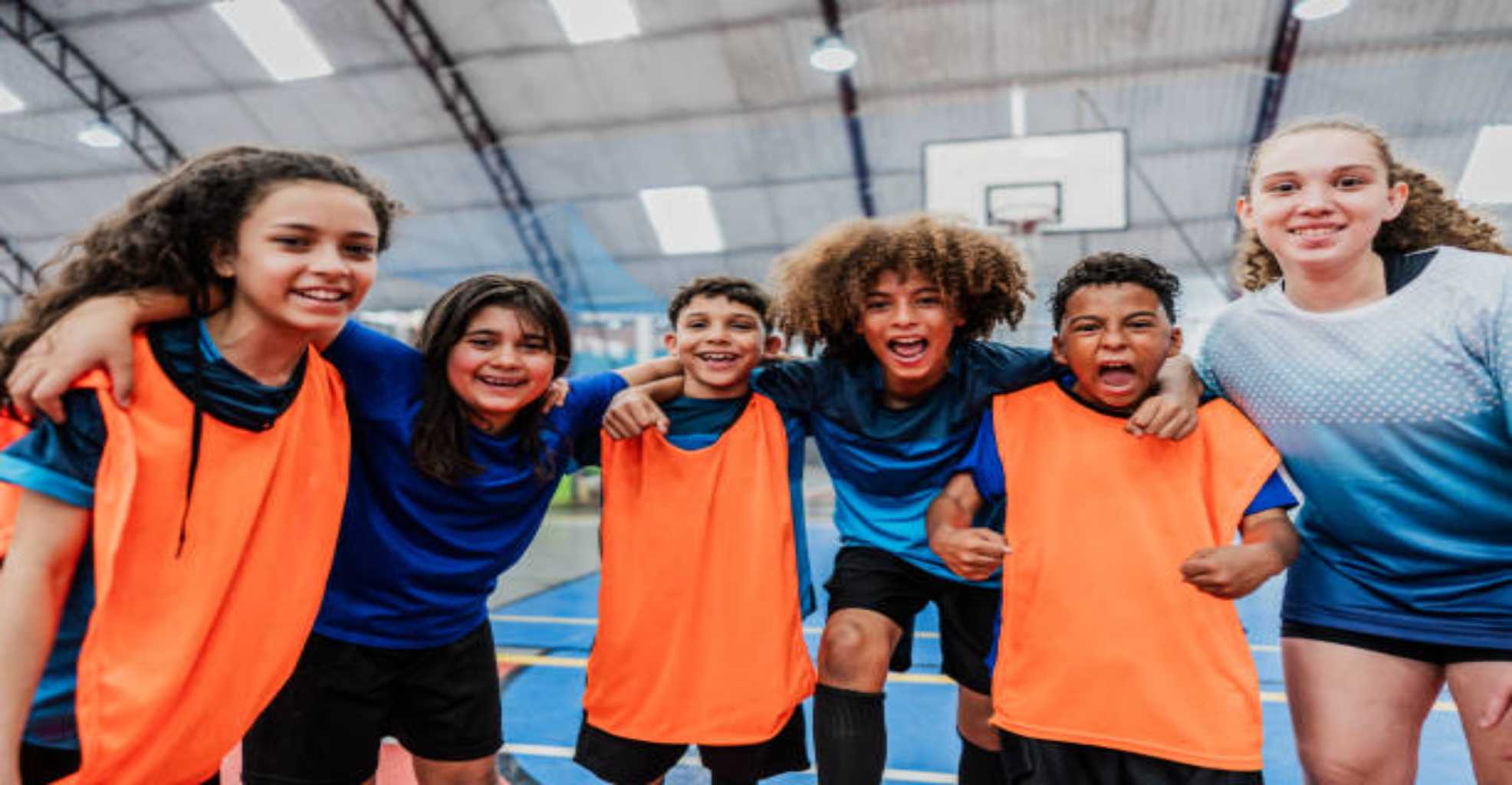Children’s Picture Books About Sports That Encourage Teamwork
In the world of children's literature, picture books are powerful tools for teaching values, emotions, and life skills. Among the many themes explored in these books, sports and teamwork stand out as dynamic and engaging subjects. When combined, they create stories that are not just entertaining but deeply educational—instilling values of cooperation, empathy, resilience, and shared goals.
As interest grows in inclusive, character-building books for younger readers, children’s picture books about sports are emerging as essential tools for parents, teachers, and publishers alike. This post highlights how these books promote teamwork and provides examples that blend athletics with moral and social development.
Why Sports Are a Natural Fit for Teamwork Lessons
Sports provide an ideal framework to introduce children to the concept of teamwork. The structure of a team sport—where each member plays a role, works toward a common goal, and learns to support others—mirrors many real-life social settings children will encounter.
In picture books, this dynamic is brought to life with bright illustrations, relatable characters, and simple narratives that are easy to grasp but emotionally rich. Children see how players resolve conflicts, celebrate together, and rely on each other, making teamwork more than just a concept—it becomes a lived experience.
Key Teamwork Lessons Found in Sports Picture Books
Children’s sports books that emphasize teamwork often teach:
-
The value of passing the ball – Sharing credit and trusting teammates.
-
Encouraging others – Helping others shine instead of competing against friends.
-
Handling loss gracefully – Understanding that winning isn't everything.
-
Including everyone – Diversity and accessibility in team play.
-
Problem-solving together – Working through obstacles as a group.
These lessons are often delivered with humor, emotion, and age-appropriate storytelling, making them memorable for young readers.
Notable Children’s Picture Books That Promote Teamwork Through Sports
Here are several standout titles that use sports to teach young readers about working together:
1. Soccer Star by Mina Javaherbin
Set in Brazil, this beautifully illustrated book tells the story of Paulo Marcelo Feliciano and his dream of becoming a soccer star. But what truly shines is how Paulo looks out for his sister and plays as part of a team. The narrative subtly emphasizes gender inclusion and teamwork within a global sports setting.
2. Goodnight Soccer by Michael Dahl
This bedtime picture book captures the quiet magic of soccer while embedding themes of teamwork and perseverance. It’s a gentle way to introduce the emotional connection players have with the game—and with each other.
3. The Bear Must Go On by Dev Petty
Although not directly a sports book, this story about a group of animals working together for a play uses the mechanics of team sports—communication, cooperation, and collective goals. It’s a great metaphor for younger children learning about group dynamics.
4. Salt in His Shoes by Deloris and Roslyn Jordan
Written by Michael Jordan’s mother and sister, this book tells the story of young Michael’s journey to greatness. Though focused on individual growth, it underlines how Michael learns from mentors, family, and teammates—reinforcing that nobody succeeds alone.
5. Karate Kid by Rosanne L. Kurstedt
A wonderful entry into martial arts literature for kids, this book uses karate to teach not just strength and discipline but also respect, partnership, and learning from others. It brings a unique, one-on-one sport into the teamwork conversation through dojo culture.
6. Teamwork Isn’t My Thing, and I Don’t Like to Share! by Julia Cook
Though not sports-specific, this humorous and relatable story about a boy learning to work with others applies perfectly to team sports. It’s often used by educators to address social-emotional learning.
Illustration: A Visual Language of Teamwork
Picture books rely on imagery as much as words to tell their stories. In sports-themed books, illustrations show children passing balls, strategizing together, high-fiving, and comforting each other after a loss. These images serve as powerful, nonverbal lessons about connection and community.
In some books, the illustrations go further—showing body language, diverse characters, and inclusive teams. These visuals reinforce to children that everyone has a place on the team, no matter their background or abilities.
Cultural Diversity and Representation in Sports Books
One of the great advantages of sports as a theme is its global relevance. Picture books that feature soccer in Brazil, cricket in India, or basketball in urban America reflect the diversity of experiences and allow readers to see both themselves and others in sports narratives.
Publishers have a growing responsibility—and opportunity—to elevate these stories. Books like Soccer Star and Hoop Genius (about the inventor of basketball) not only entertain but also educate children about how sports can unite different cultures through teamwork.
The Publisher’s Role in Elevating These Stories
For publishers, children’s picture books about sports and teamwork represent a fruitful intersection of education and entertainment. These stories can easily align with classroom curricula on social-emotional learning, physical education, and cultural studies.
To stand out in a competitive market, publishers should:
-
Invest in high-quality illustrations that represent diverse teams and dynamic action scenes.
-
Partner with educators and coaches to ensure the lessons are applicable and classroom-friendly.
-
Explore underrepresented sports and cultures, from lacrosse and curling to capoeira and kabaddi.
-
Support emerging authors and illustrators with lived experience in youth sports and community building.
In short, publishers can position these books as more than stories—they can become resources for child development.
How Parents and Educators Can Use These Books
Parents and teachers often look for ways to address teamwork, sharing, and cooperation without sounding preachy. Sports-themed picture books are natural conversation starters. They can be used to:
-
Facilitate discussions about handling winning and losing
-
Teach fairness and inclusion in group settings
-
Encourage physical activity and team participation
-
Address bullying and peer pressure through story analogies
When read together, these books can even help children reflect on their own experiences in sports, whether it's a playground game or a youth league.
Trends in Sports Picture Book Publishing
The rise of inclusive literature and global storytelling is influencing how sports books are written and published. Current trends include:
-
Gender-neutral sports stories: Moving away from "boys play soccer, girls do ballet" narratives.
-
Neurodiverse and differently-abled characters: Featuring kids with autism, ADHD, or physical disabilities who participate fully in team activities.
-
Bilingual editions: Books that introduce sports vocabulary in multiple languages.
-
Non-traditional sports: Skateboarding, surfing, parkour—sports that reflect modern youth interests.
These trends offer opportunities for fresh storytelling while keeping teamwork as the central theme.
Conclusion: Where the Game Meets the Page
Children’s picture books about sports that promote teamwork are more than just fun reads—they’re foundational stories that help young readers build essential life skills. Through dynamic illustrations, relatable characters, and accessible narratives, these books teach kids how to cooperate, empathize, and strive toward shared goals.
For publishers and authors, this genre remains rich with potential—particularly as readers and educators seek more inclusive, emotionally intelligent content. The intersection of sports and storytelling isn’t just about who wins the game. It’s about who we become when we play together.







